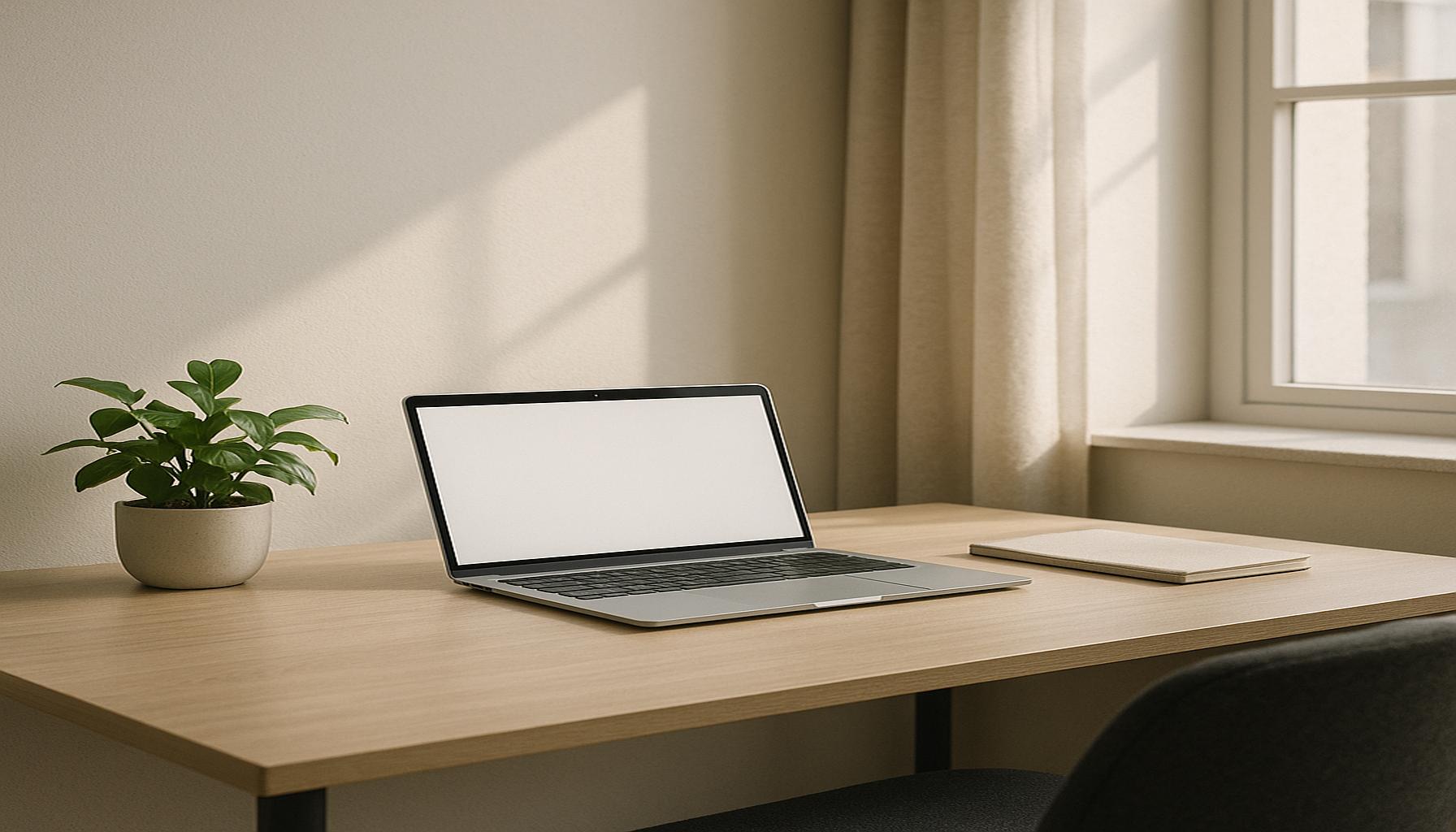The Connection Between Minimalism and Productivity: Less Is More

The Connection Between Minimalism and Productivity
In today’s fast-paced world, many individuals are exploring ways to enhance their productivity and streamline their lives. One compelling approach gaining traction is minimalism, a lifestyle focused on simplifying possessions and commitments. But how does reducing excess contribute to increased efficiency?
Research indicates that embracing minimalism can lead to significant improvements in productivity. By adopting a minimalist mindset, individuals find themselves navigating their daily lives with greater clarity and purpose. Here are some key points to consider:
- Clutter Reduction: A tidy workspace fosters concentration. Numerous studies have shown that clutter can significantly hinder our ability to concentrate and process information. For instance, a study by Princeton University found that individuals working in cluttered environments were more distracted and less able to focus on tasks.
- Intentional Living: Fewer distractions empower better decision-making. By prioritizing essential tasks and discarding non-essential commitments, individuals can channel their energy towards what really matters. This approach is echoed in Greg McKeown’s bestselling book, *Essentialism: The Disciplined Pursuit of Less*, which advocates for focusing on the things that provide the most value in life.
- Time Management: Simplifying tasks allows for prioritization of what truly matters. A minimalist approach encourages individuals to adopt frameworks such as the Eisenhower Matrix, which differentiates between urgent and important tasks. This system can drastically enhance time management skills and overall productivity.
Across the United States, many are implementing minimalist principles in both their personal and professional lives. The results can be striking:
- Increased Focus: Without distractions, individuals find it easier to maintain momentum. Companies like Google have adopted minimalist office designs that promote open spaces devoid of unnecessary items, resulting in employees who report higher levels of focus and satisfaction.
- Enhanced Creativity: A simplified environment can inspire innovative thinking. The famous designer Steve Jobs was known for his minimalist approach, often opting for simplicity in product design and workplace aesthetics, which fostered a culture of creativity at Apple.
- Reduced Stress: Less clutter equates to a more peaceful mindset. Psychological studies have shown that clutter can lead to increased levels of cortisol, the stress hormone. By minimizing their surroundings, individuals can experience a sense of calm and control, contributing to better mental health.
As we delve deeper into the synergy between minimalism and productivity, it becomes clear that sometimes, less truly is more. The minimalist movement is not just a trend; it represents a profound shift in how we approach our lives and work. As individuals seek to reclaim their time and creativity, the impact of adopting a minimalist mindset can lead to not only a more productive life but also a more fulfilling one. Join us in exploring the multifaceted benefits of embracing minimalism for a more productive journey.
Understanding Minimalism as a Productivity Tool
As we begin to explore the connection between minimalism and productivity, it’s crucial to understand what minimalism truly entails. More than simply purging possessions, minimalism is a philosophy that emphasizes the intentional selection of what to keep in our lives, guided by a vision of clarity and purpose. This intentional approach is what can translate into tangible productivity gains.

One of the foundational elements of minimalism is clutter reduction. Clutter doesn’t just occupy physical space; it demands our cognitive resources as well. The distractions caused by disorganization can leave individuals feeling overwhelmed, thereby stifling their ability to focus on critical tasks. Science backs this concept; studies show that environments with excessive clutter can impair attention and lead to decision fatigue. Therefore, by creating a clean, uncluttered space, individuals can harness improved concentration and decisiveness.
Moreover, minimalism connects deeply with the concept of intentional living. Living intentionally means making conscious choices about how we spend our time and energy. With a minimalist mindset, people are encouraged to evaluate the commitments and activities they engage in, discarding those that do not align with their core values or objectives. Research from the University of California supports this idea, demonstrating that having fewer options leads to better decision-making, as it reduces the cognitive load on our brains. This simplification empowers individuals to focus on significant tasks that contribute to their overall goals.
Taking a minimalist approach also extends into time management. When individuals learn to simplify their tasks and prioritize effectively, they make space for what is truly essential in their lives. For instance, productivity frameworks like the Eisenhower Matrix can assist in identifying and managing tasks by urgency and importance, putting a spotlight on what truly demands attention. By consistently applying this method, individuals can mitigate feelings of overwhelm, allowing them to address high-priority tasks without distraction.
Real-Life Applications of Minimalism in Enhancing Productivity
As minimalist principles permeate personal and professional spheres across the United States, the results are remarkable and worth noting:
- A More Productive Work Environment: Many organizations have adopted minimalistic designs in their offices, focusing on open layouts and fewer distractions. Companies such as Apple and Google have integrated minimalist principles into their workplace design, which has been linked to heightened employee satisfaction and productivity.
- Greater Creative Output: Minimalism has been observed to foster an atmosphere that promotes creativity. Notable innovators, including Steve Jobs, embraced simplicity not only in product design but also in their working environment, allowing for a culture rich in brainstorming and creative thought.
- Improved Mental Well-Being: The act of simplifying one’s life can alleviate the stress that arises from clutter and overcommitment. A study conducted by the American Psychological Association found that decluttering can lead to lower cortisol levels, enhancing overall mental health and clarity.
In this journey toward understanding how minimalism enhances productivity, it’s evident that adopting a less is more philosophy reshapes how we work, think, and live. By minimizing excess, individuals can achieve a greater focus, enhanced creativity, and a fulfilling sense of control over their lives. As we continue to explore the synergy between these concepts, it becomes increasingly clear that minimalism is a potent catalyst for unlocking true productivity.
| Advantages of Minimalism | Impact on Productivity |
|---|---|
| Simplified Environment | A clutter-free environment leads to increased focus and decreased distractions. |
| Clearer Goals | Less clutter results in more clarity around personal and professional objectives. |
| Improved Decision Making | Minimalism allows for quicker decision-making by reducing overload. |
| Enhanced Creativity | With fewer distractions, the mind can embrace creative thinking and innovation more readily. |
By incorporating these principles of minimalism, individuals can significantly elevate their productivity levels, proving that sometimes, less truly is more. The strategic reduction of clutter and excess enables not just efficiency, but a clearer pathway toward achieving personal and work-related goals. Would adopting a minimalist approach unlock your full potential? Perhaps it’s time to explore the possibilities of simplicity in your daily life.
Challenges and Considerations in Adopting Minimalism for Productivity
Despite the benefits of minimalism as a productivity enhancer, the journey towards adopting such a philosophy can be daunting. Transitioning into a minimalist lifestyle often requires a significant mindset shift, which can pose various challenges for individuals and organizations alike. Understanding these hurdles while navigating minimalism can make the process smoother and more effective.
One of the primary barriers is the fear of missing out (FOMO). Many people struggle with the notion that by letting go of possessions or commitments, they risk missing valuable opportunities or experiences. This psychological phenomenon creates a resistance to decluttering both physical and mental spaces, often leading to a continuous cycle of overwhelm. To counteract this, individuals can benefit from re-framing their perspective: rather than viewing minimalism as a loss, they should see it as a path toward gaining clarity and focus in their lives. Emphasizing quality over quantity allows for more meaningful engagement in chosen activities.
Furthermore, the societal pressure to accumulate can be strong, particularly in cultures that celebrate consumerism. The pervasive belief that success is equated with material wealth creates an environment where minimalism becomes perceived as countercultural or even radical. For many, embracing a minimalist mantra means navigating through societal expectations. One powerful counter-strategy is creating a supportive community, whether through online groups or local meet-ups, where individuals can share experiences, gain encouragement, and celebrate the victories of downscaling.
Practical Steps to Embrace Minimalism for Enhanced Productivity
To facilitate the adoption of a minimalist mindset and maximize productivity, certain practical steps can be taken. These steps not only promote decluttering but also reinforce a culture of heightened focus and intentionality. Consider the following methods:
- Implement a 30-Day Declutter Challenge: By committing to decluttering for just 30 days, individuals can target one item, task, or commitment each day. This gradual method reduces overwhelm while being powerful enough to create lasting change.
- Practice the One-In-One-Out Rule: This principle encourages individuals to donate or discard one item for every new acquisition. This practice not only manages physical clutter but nurtures mindfulness about consumption, thus improving decision-making abilities.
- Establish Daily Intentions: Starting each day with a clear intention helps keep the focus on what truly matters. This practice can be as simple as writing down three priorities or ensuring that only vital tasks fill one’s schedule, fostering productivity through conscious living.
Moreover, technology can serve as a valuable ally in the journey to minimalism. Numerous digital tools and applications are designed to reduce distractions, streamline workflows, and promote organization. Tools like task managers (e.g., Todoist or Trello) help individuals prioritize effectively while minimizing mental clutter, allowing them to concentrate on one thing at a time—a hallmark of the minimalist philosophy.
As the principles of minimalism evolve and become more integrated into the modern workplace, it’s essential for individuals to embrace this narrative of simplification, intentionally shaping their environments for enhanced productivity. By addressing the challenges and adopting actionable strategies, anyone can discover the transformative power of minimalism in every facet of life.
Conclusion: Embracing Minimalism for Enhanced Productivity
In an age where distractions and clutter dominate our lives, embracing minimalism emerges as a powerful strategy to boost productivity. The synergy of simplicity and efficiency unveils numerous benefits—clarity of thought, increased focus, and an optimized environment, all leading to enhanced task performance. By intentionally reducing the noise around us, we create room for what truly matters, allowing for deeper engagement in both personal and professional pursuits.
While the transition to a minimalist lifestyle can introduce challenges, such as fear of missing out or societal pressures to conform, the rewards often outweigh the obstacles. Cultivating a supportive network or committing to gradual decluttering can significantly aid individuals in overcoming these hurdles. By incorporating actionable steps, such as the 30-Day Declutter Challenge or the One-In-One-Out Rule, anyone can embark on a fulfilling journey toward a more intentional life.
As we continue to explore the multifaceted connection between minimalism and productivity, it becomes clear that this philosophy invites us not merely to declutter our physical spaces but also to liberate our minds, inspiring creativity and innovation. Ultimately, embracing the less is more mindset can redefine our approach to work and daily living, empowering us to focus on what genuinely contributes to our goals and well-being. In this evolving landscape, those who prioritize minimalism may find themselves at the forefront of both personal success and professional achievement.
Related posts:
The Art of Personal Organization in a Minimalist Home
The Impact of Minimalism on Mental Clarity and Personal Organization
The Art of Personal Organization in a Minimalist Home
Minimalism as a Strategy for Stress Reduction
How Minimalism Can Transform Your Mental Health
Finding Balance: Minimalism and Time Management

Linda Carter is a writer and organization expert specializing in minimalism and personal organization. With extensive experience helping individuals create clutter-free, functional spaces and adopt mindful habits, Linda shares her knowledge on our platform. Her goal is to empower readers with practical advice and strategies to simplify their lives, stay organized, and achieve a sense of calm and balance in their daily routines.